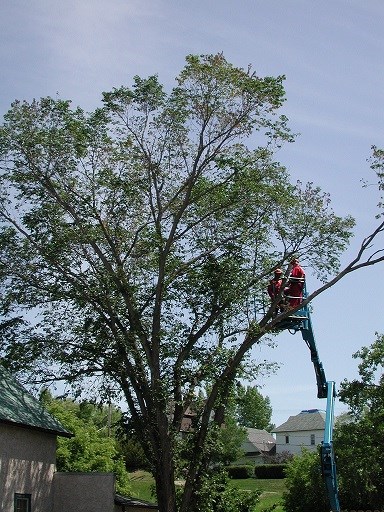In 2021, a survey done by Saskatchewan’s Ministry of Environment identified 570 trees that were removed due to Dutch Elm Disease (DED). Due to DED, many of Saskatchewan’s urban and rural forests are at risk and mitigating the spread is an imperative part of forest health. This risk is even higher in the eastern half of the province.
"Dutch elm disease is an ongoing concern for Saskatchewan residents and wildlife," Environment Minister Dana Skoropad said. "We are pleased to continue working with a local company on this important initiative to protect and maintain our urban and rural forests."
The DED program controls wild elm trees in buffer zones created around high-risk communities to prevent the disease from spreading into urban forests. Moose Jaw is included as one of them. The other high-risk communities include:
- Balcarres
- Estevan
- Indian Head
- Melfort
- Regina
- Tisdale
- Wolseley
It is important to remember that it is illegal to use, store, transport, or buy elm firewood. Additionally, do not prune elms between April 1 to August 31. Survey contractors will be working hard over the summer to mark trees for removal. Northern Tree Co. Inc. will come to remove the marked trees in fall and early winter.
If you believe a tree has DED, or for more information in general, contact the Ministry of Environment’s Inquiry Centre at 1-800-567-4224 or [email protected].
For more information on Dutch Elm Disease, including prevention tips, visit https://www.saskatchewan.ca/business/agriculture-natural-resources-and-industry/forestry/forest-health/dutch-elm-disease.




